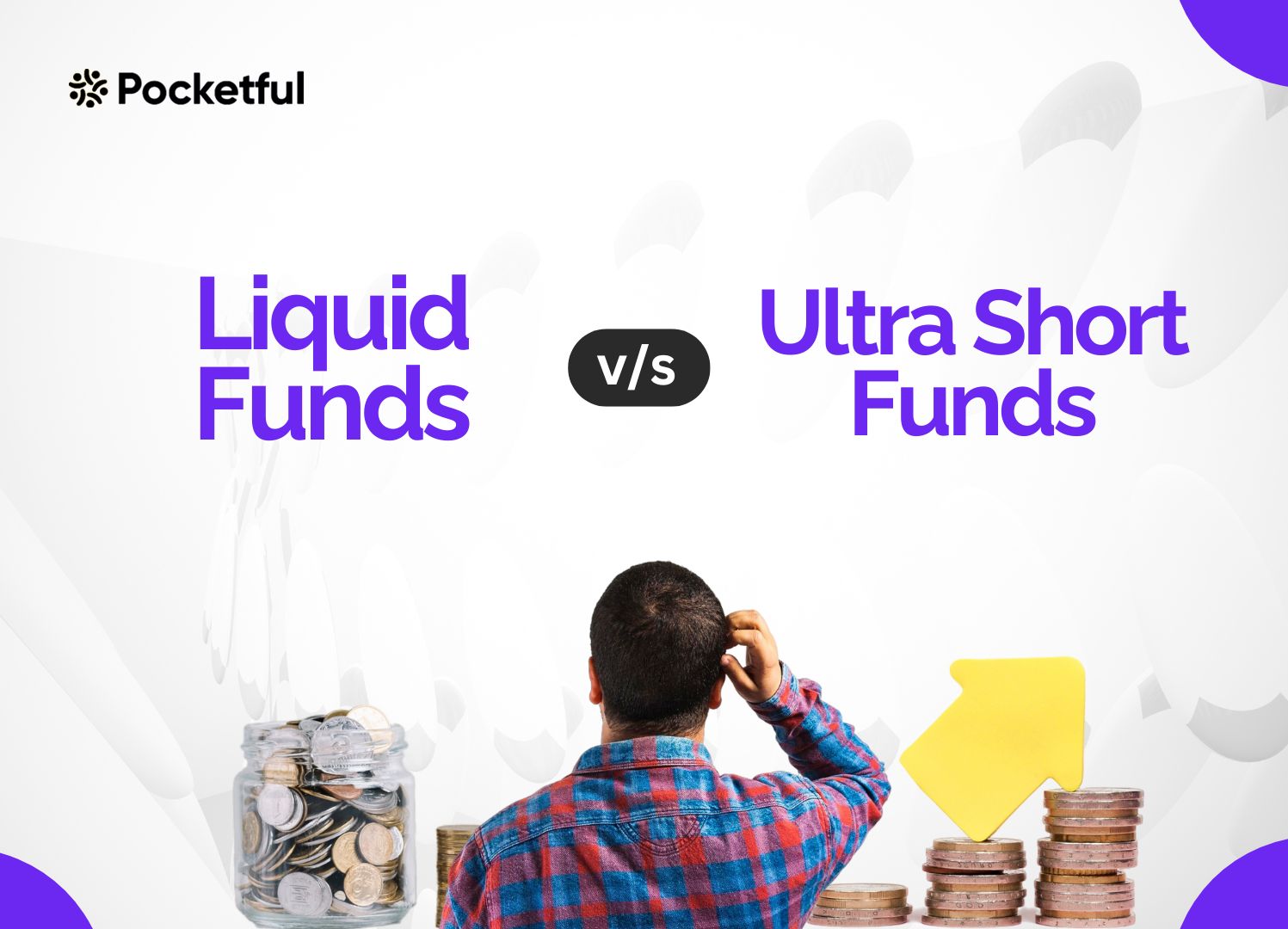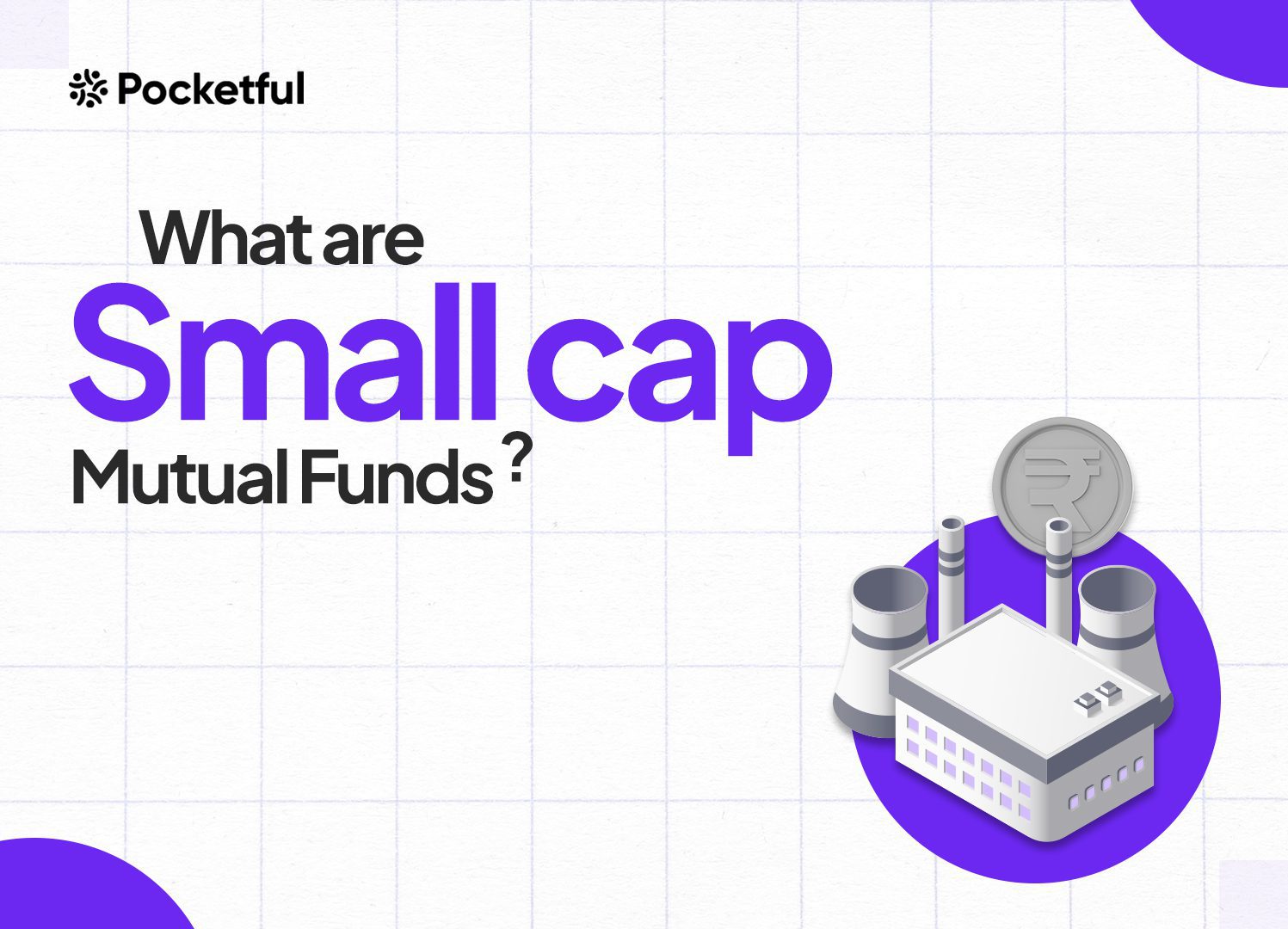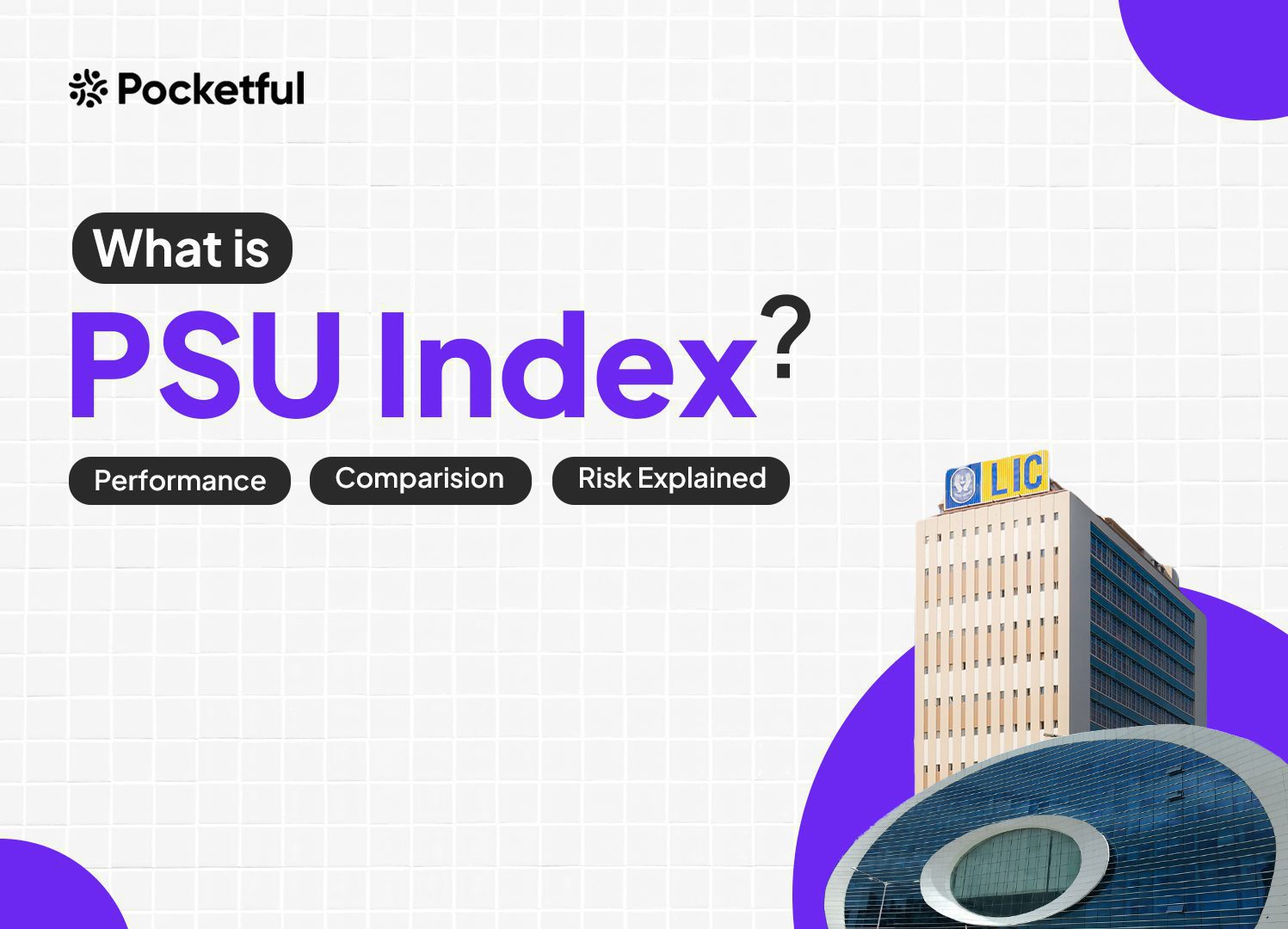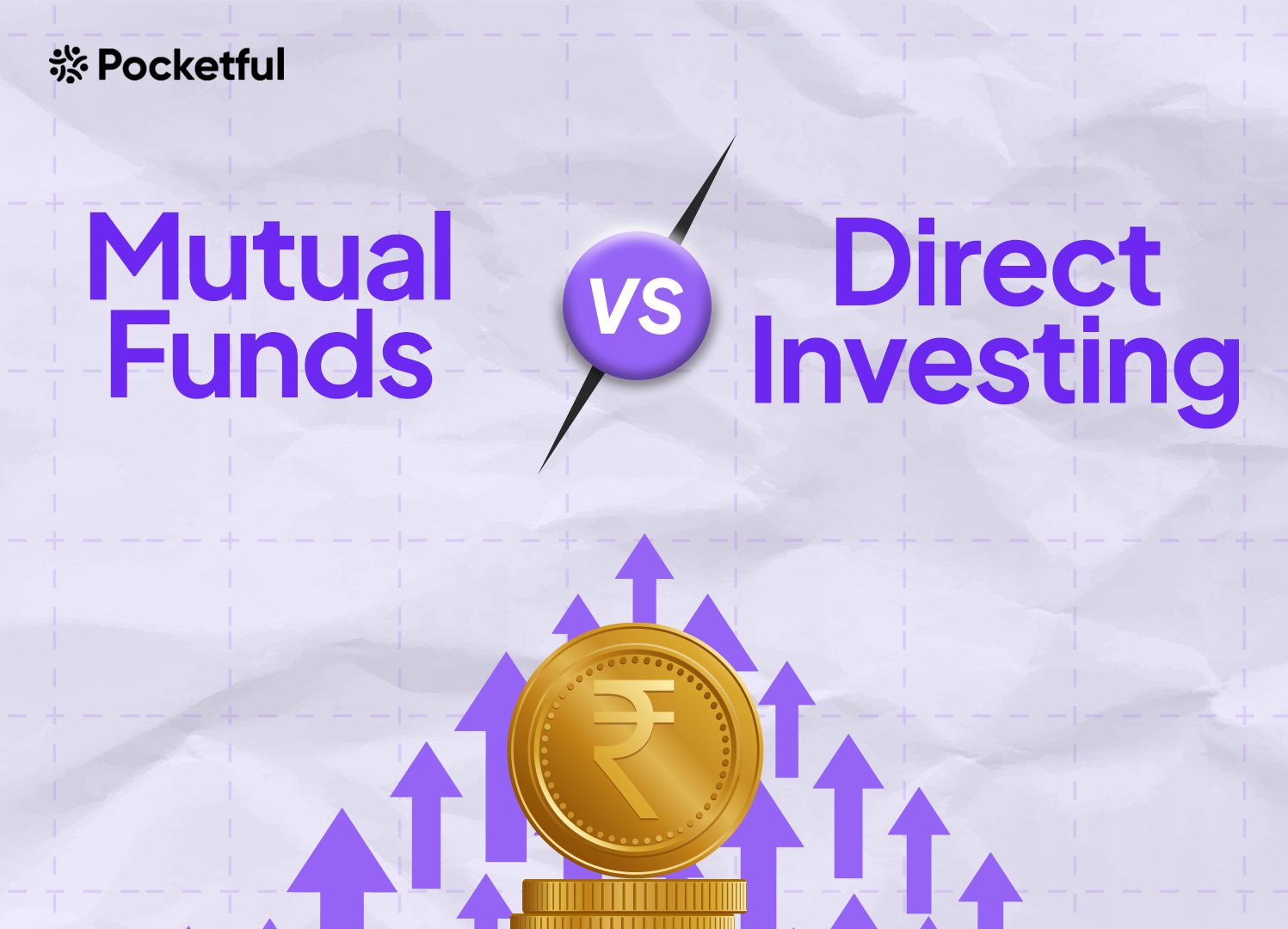There are two kinds of people in this world: those who are content to let life take them by the reins and those willing to take charge and make decisions for themselves. The same holds for the investing world. There are two investment styles: Active and Passive. In active, investors actively manage their portfolios, whereas, in passive, they try to replicate index performance. In other words, there is less turnover, or say, less buying and selling activity.
Continue reading the blog to learn the differences between active and passive investment strategies!
Mutual Funds

Mutual funds are a class of investment vehicle that combines the money of multiple investors with similar investing aims or objectives. The pooled money is invested in various asset types, including equities, bonds, etc., by fund managers.
If you want to learn more about the mutual funds, check out our blog on the same: What are Mutual Funds?
Types of Mutual Funds
Based on investment style, there are two kinds of mutual funds:
- Active Mutual Funds
- Passive Mutual Funds
Active Mutual Funds

In these mutual funds, the fund management and their research team actively select the securities and asset classes in which investments will be made. The fund manager aims to outperform the benchmark, a yardstick for evaluating a fund’s performance. The fund managers base their decisions on several variables, including the state of the economy, the market, the performance of the firm, and the industry.
Pros of Active Mutual Funds
- Active fund managers can modify their investment portfolio in response to changes in the market dynamics, thereby adjusting risk and maximizing rewards.
- An active fund management strategy aims to outperform the benchmark index, which has the potential to generate superior returns.
- Under active fund management, fund managers deploy various strategies related to risk management, such as tactical asset allocation and hedging, which help investors minimize their risk during the market downturn. The fund manager and their research team thoroughly investigate the securities before making any investing decisions.
Cons of Active Mutual Funds
- Active mutual funds charge higher fees than passively managed funds.
- These funds carry higher risk as the fund manager’s selection of securities can go wrong.
- The passive funds generally match the market’s return, whereas the actively managed funds do not guarantee that they will outperform the benchmark returns.
- Active fund managers change their portfolios very frequently according to the market dynamics; hence, the portfolio of active funds carries a higher turnover rate and can be more volatile.
Passive Mutual Funds

Passive funds or Index Funds track the index or benchmark and try replicating its performance. These funds generally provide returns equal to the benchmark return, and investors will get the net return after deducting the expenses charged by the asset management companies. Passive funds hold securities in proportion to the index they track. There are also passively managed Exchange Traded Funds (ETFs), which track the performance of various indices. You can check out our blog on the ETFs: What are ETFs?
Pros of Passive Mutual Funds
- Passive funds generally have an expense ratio (fees) than active funds.
- Passive funds aim to replicate the performance of a specific index, so investors do not need to worry about whether their fund will outperform the benchmark.
- These funds carry lower risk than actively managed funds (sectoral, thematic, etc.) because their portfolios are diversified.
- As they aim to mirror the performance of the benchmark, passive funds provide consistent returns. They are also easy to understand, so they are suitable for new investors as well.
Cons of Passive Mutual Funds
- The passive funds have limited potential to outperform the benchmark.
- Because the passive fund portfolio is restricted to a certain index, it cannot select investments with a higher potential for return. In other words, Index funds’ returns are usually determined by the returns offered by the underlying; they are unable to take advantage of other market possibilities.
- Although index funds strive to accurately mimic the performance of the benchmark, several factors may prevent them from doing so, including fund expenditures, transaction costs, and slippage. Investors can check the tracking error of passive funds before investing.
Active vs Passive Mutual Funds
| Particulars | Active Funds | Passive Funds |
|---|---|---|
| Investment Objective | It focuses on outperforming the benchmark. | They try to match the performance of indexes. |
| Expense Ratio | It ranges between 0.50% to 2.50%, depending on the debt and equity. | The expense ratio under passive funds cannot exceed 1.25% |
| Securities Selection | The fund manager has the right to select the securities according to the market dynamics, investment objectives, etc. | There is no such requirement as it simply tracks the index. |
| Returns | Active funds generally have the potential to provide returns on the higher side. | The returns of passive funds are similar to the index they are tracking. |
| Risk | Actively managed funds carry high risk. | Passive funds tend to have lower risk as compared to active funds. |
Read Also: Multi-Cap Vs Flexi-Cap Mutual Funds? Which Is Better For You?
Which one should you choose: Active or Passive?

The decision between active and passive funds is influenced by a number of factors, such as investing objectives, risk tolerance, and expected returns. Active mutual funds may be an option for investors who are willing to take on additional risk in exchange for a higher return and can afford to bear higher expenses. Passive funds, on the other hand, are better suited for investors who prefer lower risk, are satisfied with the returns posted by the indices, and do not want to pay higher fees to manage their investments.
Read Also: Mutual Fund vs PMS: Which is Better?
Conclusion
On a concluding note, there are benefits and drawbacks to both passive and active fund investing. While more conservative investors are encouraged to invest in passive funds, active fund investing delivers higher rewards at a higher risk. Another alternative that can give you maximum return, minimal risk, and diversification is to combine the two types of funds. That being said, before making any investing decisions, it is advisable to speak with your investment advisor and consider your risk tolerance.
Frequently Asked Questions (FAQs)
Are actively managed funds worth the risk?
If you are willing to take risks and have a longer investment horizon, you can consider investing in actively managed funds, as they have the potential to offer higher returns than the benchmark.
How do passive funds work?
Passive funds invest in a particular index by replicating the securities in those indices and aim to post returns similar to the benchmark; they generally do not outperform the benchmark in which they invest.
What are the drawbacks of investing in active mutual funds?
Active mutual funds generally have a higher expense ratio than passively managed funds. If the fund manager is not able to perform, then the risk of the active fund underperforming its benchmark is always there.
What factors should an investor consider before selecting active or passive mutual funds?
Investors should consider their investment goal, risk tolerance, expense ratio, tracking error, and investment horizon before selecting active or passive mutual funds.
Do passive funds carry lower taxation than active funds?
No, all the equity mutual funds, whether active or passive, carry the same taxation in India. If you want to learn more, you can check out our detailed blog on Taxation of mutual funds.



























